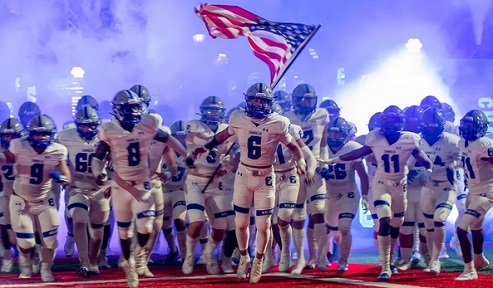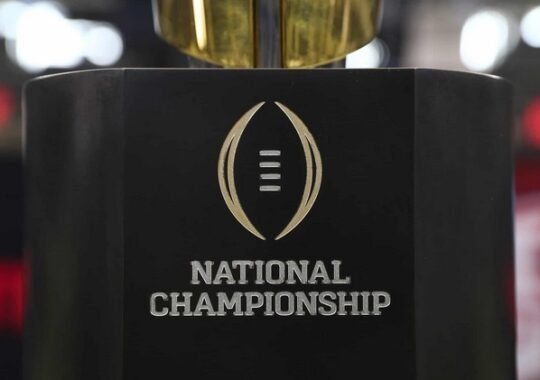Texas High School Football Rich of History Texas high school football is a deeply ingrained cultural phenomenon that extends beyond the sport, shaping the social and communal fabric of the state. Originating in the early 20th century, the sport quickly became a staple in Texas, with schools forming competitive teams and creating a vibrant football culture. The establishment of the University Interscholastic League (UIL) in 1910 was pivotal in organizing and structuring competitions.
The sport’s cultural significance is highlighted in media, particularly through the book and film “Friday Night Lights,” which portrays both the passion and pressures of Texas high school football. The state is also known for its impressive football facilities, some of which rival those of small colleges, reflecting the community’s investment in the sport.
Texas high school football has produced notable alumni, such as Earl Campbell, Drew Brees, and Kyler Murray, who inspire future generations. Overall, the legacy of Texas high school football is a testament to its role in promoting community unity, tradition, and a shared competitive spirit.
Texas High School Football of Introduction
Texas high school football is a cultural cornerstone, renowned for its rich history and deep community impact. Since its early beginnings in the 20th century, the sport has grown into a statewide phenomenon, with the University Interscholastic League (UIL) established in 1910 to organize competitions and championships. Iconic programs like Odessa Permian, Southlake Carroll, and Katy High School have built dynasties, while intense rivalries such as “Permian vs. Midland Lee” draw massive crowds and foster local pride.
High school football games are major social events, uniting communities and supporting local economies. The sport’s cultural significance is highlighted in media representations, notably “Friday Night Lights,” which captures the passion and pressures of Texas football. With impressive facilities and numerous notable alumni, Texas high school football continues to inspire and shape the lives of young athletes and their communities.
Famous Texas High School Football Players and Coaches
Earl Campbell – Known as the “Tyler Rose,” Earl Campbell played for John Tyler High School in Tyler, Texas. He became a college football legend at the University of Texas and an NFL Hall of Famer with the Houston Oilers.
Drew Brees – Attended Austin Westlake High School, where he led his team to a state championship. Brees went on to a stellar college career at Purdue and became a Super Bowl-winning quarterback with the New Orleans Saints.
Kyler Murray – Played for Allen High School, leading the team to three consecutive state championships and a 43-0 record. He won the Heisman Trophy at the University of Oklahoma and is now a star quarterback for the Arizona Cardinals.
Adrian Peterson – A standout at Palestine High School, Peterson became a college star at the University of Oklahoma and one of the NFL’s greatest running backs, primarily with the Minnesota Vikings.
Matthew Stafford – Played for Highland Park High School in Dallas, where he led his team to a state title. He went on to play for the University of Georgia and became a Super Bowl-winning quarterback with the Los Angeles Rams.
Coaches
Gordon Wood – A legendary figure in Texas high school football, Wood won nine state championships during his career, primarily at Brownwood High School. His coaching philosophy and success have left a lasting legacy in Texas high school sports.
Gary Gaines – Known for his tenure at Odessa Permian High School, Gaines was featured in the book and movie “Friday Night Lights.” His leadership and coaching prowess have made him an iconic figure in Texas high school football history.
Randy Allen – A highly successful coach at Highland Park High School, Allen has led his teams to multiple state championships and is celebrated for his consistent success and player development.
Todd Dodge – Known for his success at Southlake Carroll High School, Dodge won four state championships in five years. He later went on to coach at the University of North Texas and Austin Westlake High School, continuing his winning tradition.
Ronnie Gage – Coached at Lewisville High School, where he led the team to two state championships in the late 1990s. Gage is respected for his strategic acumen and ability to motivate and develop young players.
These players and coaches have not only achieved remarkable success on the field but have also left a lasting impact on the culture and legacy of Texas high school football.
Texas High School Football Rich of History
Texas high school football is rich with traditions and rituals that foster community spirit and pride. “Friday Night Lights” is the most iconic, where communities gather at local stadiums every Friday night during the season, creating a social event that unites students, parents, alumni, and fans.
Homecoming is a significant tradition featuring a week of festivities, including parades, pep rallies, and the crowning of a homecoming king and queen, culminating in a highly anticipated football game. Pep rallies before major games, especially rivalry matches, boost school spirit with performances from cheerleaders, the band, and motivational speeches.
The alma mater and fight song are central to the game-day experience, with the school band playing these anthems as fans sing along. The “Walk of Champions” involves players walking through cheering fans before games, symbolizing their journey to victory.
Rivalry games are particularly intense, drawing large crowds and community involvement, with some rivalries dating back decades. Other cherished rituals include the run-through banner, tailgating, and Senior Night, which honors senior players in a pre-game ceremony. Unique traditions like ringing victory bells or firing cannons after touchdowns add to the festive atmosphere, making Texas high school football a deeply ingrained cultural phenomenon.
Conclusion
Texas high school football holds a special place in the heart of Texans, embodying community pride, tradition, and unity. Its rich history, iconic traditions, and intense rivalries bring people together every Friday night, creating lasting memories and forging lifelong bonds. From the excitement of “Friday Night Lights” to the time-honored rituals like homecoming and pep rallies, Texas high school football fosters a sense of belonging and identity. It instills valuable life lessons in teamwork, perseverance, and sportsmanship, shaping the lives of young athletes and leaving an indelible mark on the state’s culture. In Texas, high school football isn’t just a game; it’s a way of life





